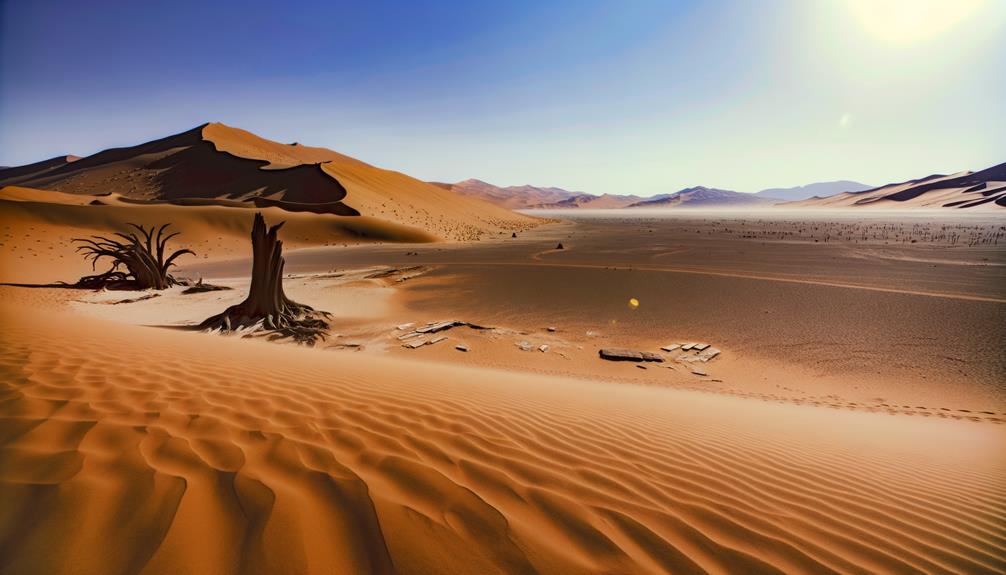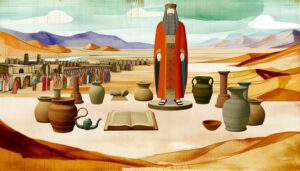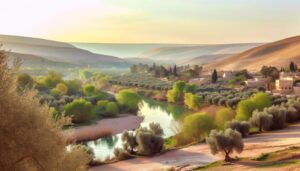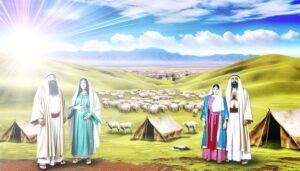Desert In The Bible Meaning: Testing and Transformation
In the Bible, the desert serves as a potent symbol of testing, transformation, and spiritual encounters. It is depicted as a place where individuals and communities undergo rigorous trials to refine their faith and character, as seen in the Israelites’ 40-year journey (Deuteronomy 8:2) and Jesus’ 40 days of fasting (Matthew 4:1-11).
The solitary environment fosters profound reflection and divine communion, exemplified by Moses’ encounter at the burning bush (Exodus 3:1-6) and Elijah’s revelation at Horeb (1 Kings 19:11-13). Those interested can further uncover the nuanced lessons drawn from these biblical desert experiences.

Desert Meaning in the Bible: Symbolism of Testing, Isolation, and Renewal
| Aspect | Description |
|---|---|
| Literal Meaning | Arid, barren land often associated with wilderness |
| Key Biblical Events | Israelites’ 40 years, Jesus’ temptation, Elijah’s journey |
| Symbolism | Testing, purification, dependence on God |
| Spiritual Significance | Place of solitude, reflection, and divine encounter |
| Key Scriptures | Exodus 3:1, Matthew 4:1, Hosea 2:14 |
| Experience of Jesus | Fasted and was tempted in the desert for 40 days |
| Transformation Theme | Growth and renewal often follow desert experiences |
| Relevance Today | Encourages faith during seasons of hardship and spiritual dryness |
Symbolism of the Desert

The desert frequently symbolizes a place of testing, transformation, and revelation in biblical narratives, serving as a backdrop for significant spiritual encounters and divine interventions.
Scriptural accounts, such as Moses’ encounter with God in the burning bush (Exodus 3:1-5) and Elijah’s journey to Horeb (1 Kings 19:4-8), illustrate the desert as a liminal space where individuals experience profound spiritual growth and divine guidance.
This barren landscape often represents a departure from the familiar, leading to introspection and divine revelation.
Additionally, the Israelites’ 40-year sojourn (Numbers 14:33-34) underscores the desert’s role in forging communal identity and covenantal fidelity.
Consequently, the biblical desert serves as a transformative milieu, revealing God’s purpose and presence.
Desert as a Place of Testing

Frequently depicted as a symbolic landscape of introspection and divine revelation, the desert also emerges in biblical narratives as a rigorous proving ground where individuals and communities face trials that test their faith and resilience.
The Israelites’ 40-year sojourn in the wilderness, as recounted in Exodus, serves as a prime example of this motif. Deuteronomy 8:2 underscores the divine purpose: ‘Remember how the Lord your God led you all the way in the wilderness… to humble and test you.’
Similarly, Jesus faced temptation in the desert for 40 days (Matthew 4:1-11), symbolizing His preparation for ministry.
These episodes illustrate the desert as a crucible for spiritual endurance, revealing and refining the true character of those subjected to its hardships.
Spiritual Formation in the Desert

In biblical narratives, the desert serves as a crucible for spiritual formation, where isolation and reflection foster profound encounters with God, as seen in the experiences of Moses (Exodus 3:1-4) and Elijah (1 Kings 19:4-8).
This setting of solitude and hardship becomes a transformative environment where trials lead to spiritual growth, exemplified by Jesus’ forty days in the wilderness (Matthew 4:1-11).
Consequently, the desert is not merely a physical location but a metaphorical space for spiritual renewal and deeper communion with the divine.
Isolation and Reflection
Amid the desolate and arid landscapes of the biblical desert, one can find profound instances of isolation and reflection that are pivotal for spiritual formation. Scripturally, the desert often represents a place where individuals encounter God in solitude, away from distractions.
| Biblical Figure | Scriptural Reference | Significance of Isolation |
|---|---|---|
| Moses | Exodus 3:1-4 | Encounter with God |
| Elijah | 1 Kings 19:4-8 | Divine revelation |
| Jesus | Matthew 4:1-11 | Temptation and prayer |
Moses’ encounter with the burning bush, Elijah’s revelation at Horeb, and Jesus’ time of fasting and prayer exemplify how isolation in the desert fosters deep spiritual insight and connection with the divine. The desert therefore serves as a crucible for inner transformation and divine communion.
Trials and Growth
As isolation in the biblical desert serves as a catalyst for profound reflection, it also becomes a proving ground where trials forge spiritual growth and resilience.
The Israelites’ 40-year journey in the wilderness (Deuteronomy 8:2-3) exemplifies this, as God used their hardships to test their faith and dependence on Him.
Similarly, Jesus’ 40 days in the desert (Matthew 4:1-11) highlight how trials can refine one’s spiritual fortitude.
These periods of testing and privation are not punitive but formative, shaping individuals into vessels fit for divine purposes.
The desert, hence, symbolizes a transformative space where adversity is met with divine guidance, fostering not only survival but also profound spiritual maturation and unwavering trust in God.
Divine Encounters in the Desert

Throughout the Bible, the desert serves as a profound setting for divine encounters, where individuals like Moses, Elijah, and Jesus experience transformative moments of revelation and guidance.
In Exodus 3:1-6, Moses encounters God in the burning bush on Mount Horeb, receiving his divine commission.
Similarly, Elijah hears God’s gentle whisper in the wilderness (1 Kings 19:11-13), signifying intimate communion and direction during a time of despair.
Jesus’ forty days in the desert (Matthew 4:1-11) highlight a period of testing and divine affirmation, underscoring his messianic mission.
These encounters illustrate the desert as a sacred space where isolation fosters profound spiritual experiences, allowing individuals to receive divine instruction and fortitude for their journeys.
Solitude and Reflection

The desert in biblical narratives often serves as a crucible for solitude and reflection, where individuals engage in deep introspection and spiritual renewal. This is exemplified by Jesus’ period of fasting and prayer in the wilderness (Matthew 4:1-11) and the reflective psalms of David during his time in desolate places (Psalm 63:1).
These arid landscapes become sanctuaries for profound self-examination and communion with God. For instance, Elijah’s retreat to Horeb (1 Kings 19:4-8) illustrates how isolation fosters divine revelation and personal transformation.
The harsh, unyielding environment of the desert strips away distractions, compelling individuals to confront their innermost thoughts and seek divine guidance. Hence, the desert represents not just physical desolation, but a space for significant spiritual growth.
Lessons From Biblical Deserts

From these profound experiences of solitude and reflection in the desert, numerous lessons emerge, offering invaluable insights into faith, obedience, and reliance on divine provision.
The Israelites’ 40 years in the wilderness (Exodus 16) teach perseverance and trust in God’s sustenance, while Elijah’s encounter with God at Mount Horeb (1 Kings 19) underscores the importance of spiritual attentiveness. Jesus’ temptation in the desert (Matthew 4:1-11) exemplifies resisting temptation through scripture.
| Biblical Event | Lesson |
|---|---|
| Israelites in Wilderness | Trust in God’s provision |
| Elijah at Mount Horeb | Spiritual attentiveness |
| Jesus’ Temptation | Resisting temptation |
| Hagar in the Desert (Genesis 21) | God’s care in dire circumstances |
| Moses’ Burning Bush (Exodus 3) | Divine calling and obedience |
These narratives collectively deepen our understanding of divine-human interaction.
Conclusion
The desert, as portrayed in biblical narratives, emerges as a multifaceted symbol, embodying testing, spiritual formation, and divine encounters.
Through the austere solitude of the desert, profound lessons are imparted, challenging the faithful to reflect deeply and grow spiritually.
Intriguingly, these barren landscapes are not merely desolate expanses but crucibles of transformation.
In this way, the biblical desert invites continuous exploration and revelation, compelling one to ponder: what deeper truths might still lie hidden within its sands?






